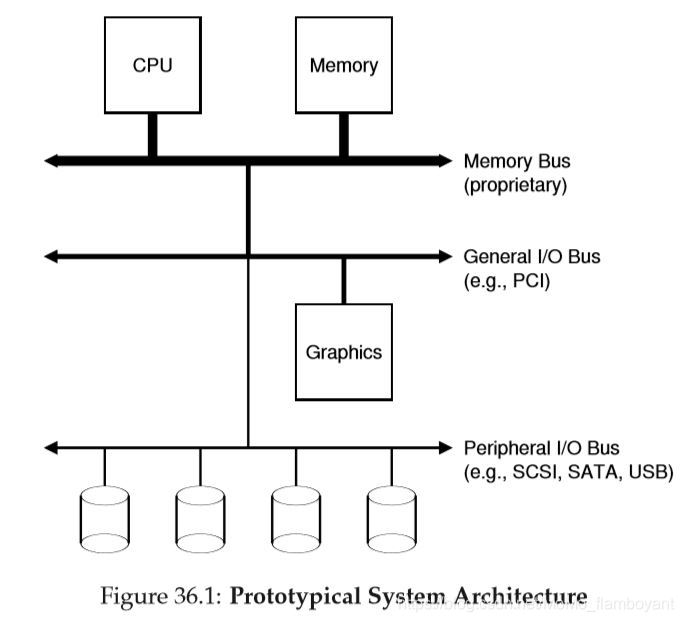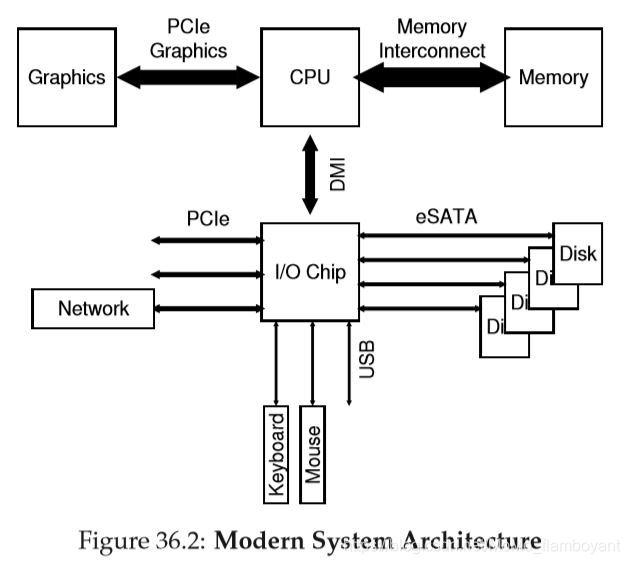Persistence:
making information persist, despite computer crashes, disk failures, or power outages.
I/O Devices
introduce the concept of an input/output (I/O) device and show how the operating system might interact with such an entity.
1 System Architecture
System architecture is a hierarchical structure, where components that demand high performance (such as the graphics card) are nearer the CPU and lower performance components are further away, due to physics and cost (the faster a bus is, the shorter it must be; thus, a high-performance memory bus does not have much room to plug devices and such into it. In addition, engineering a bus for high performance is quite costly).

The picture shows a single CPU attached to the main memory of the system via some kind of memory bus or interconnect.
Some devices are connected to the system via a general I/O bus, which in many modern systems would be PCI (or one of its many derivatives); graphics and some other higher-performance I/O devices might be found here.
Finally, even lower down are one or more of what we call a peripheral bus, such as SCSI, SATA, or USB. These connect slow devices to the system, including disks, mice, and keyboards.
Modern systems increasingly use specialized chipsets and faster point-to-point interconnects to improve performance.

The picture shows an approximate diagram of Intel’s Z270 Chipset.
Along the top, the CPU connects most closely to the memory system, but also has a high-performance connection to the graphics card.
The CPU connects to an I/O chip via Intel’s proprietary DMI (Direct Media Interface), and the rest of the devices connect to this chip via a number of diff





 本文介绍了操作系统如何与输入/输出(I/O)设备交互,包括系统架构、典型的设备接口、canonical 协议、DMA 数据传输以及设备驱动的作用。讨论了轮询和中断两种控制设备的方式,强调中断对于提高系统利用率的重要性,并探讨了不同情况下选择合适控制方式的策略。
本文介绍了操作系统如何与输入/输出(I/O)设备交互,包括系统架构、典型的设备接口、canonical 协议、DMA 数据传输以及设备驱动的作用。讨论了轮询和中断两种控制设备的方式,强调中断对于提高系统利用率的重要性,并探讨了不同情况下选择合适控制方式的策略。
 最低0.47元/天 解锁文章
最低0.47元/天 解锁文章
















 642
642

 被折叠的 条评论
为什么被折叠?
被折叠的 条评论
为什么被折叠?








